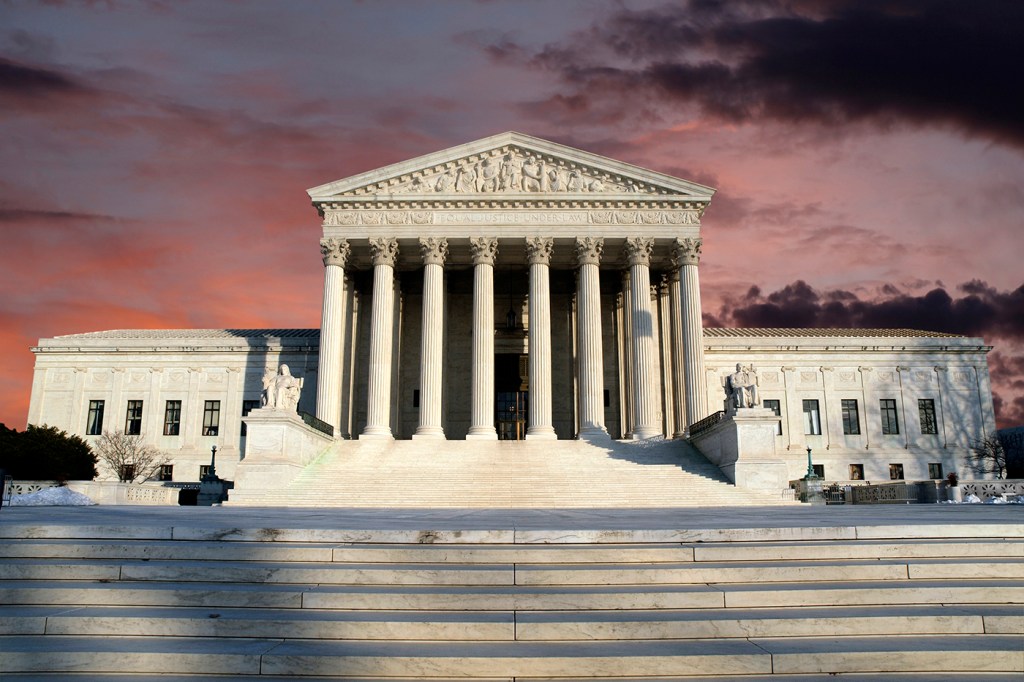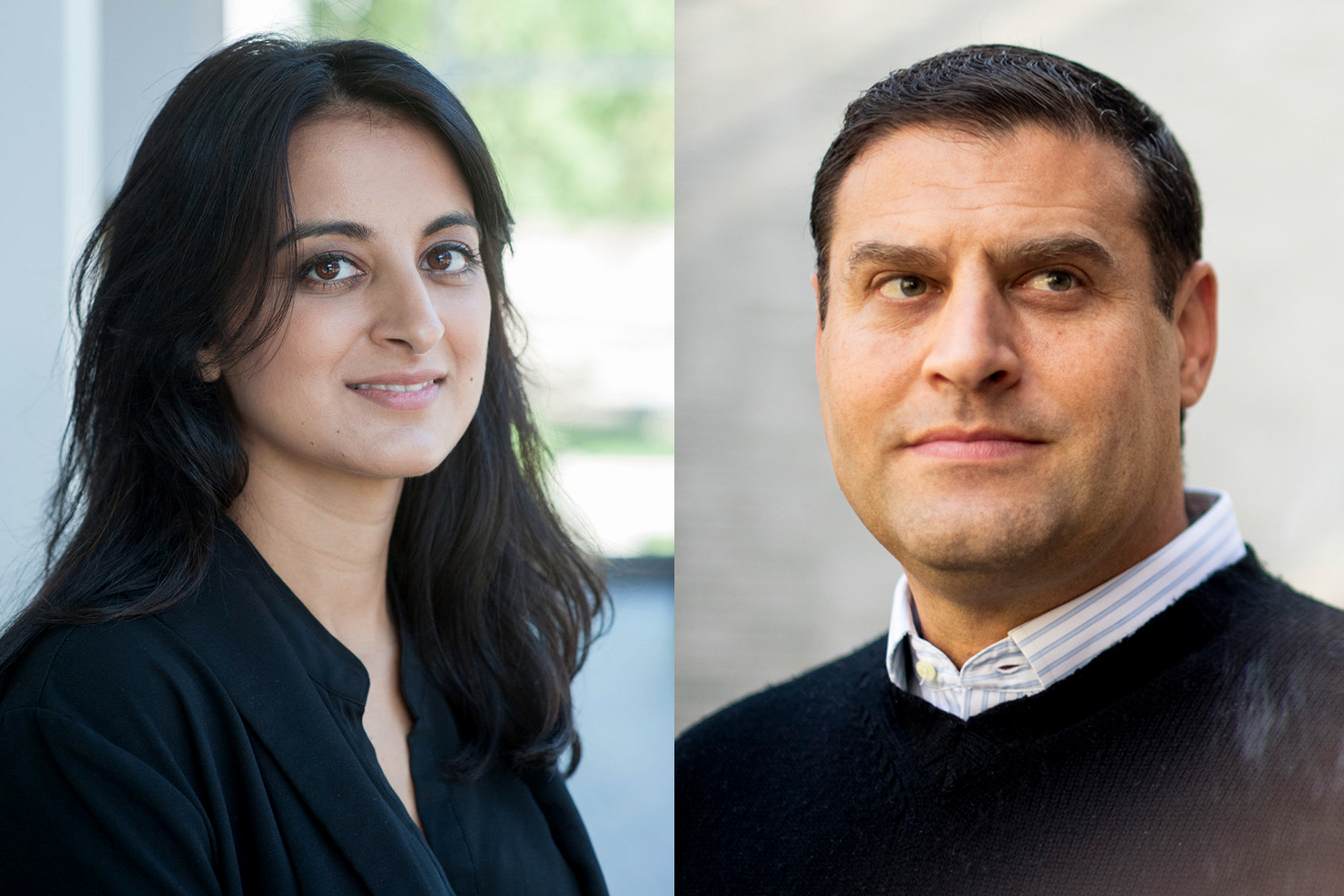The Supreme Court will hear an abortion case. What comes next?

The Supreme Court this week made the unusual decision to hear an abortion case out of Mississippi that the state’s lower courts ruled was plainly unconstitutional under the landmark Roe v. Wade—an indication that the nation’s highest court “has something to say about abortion,” says Aziza Ahmed, a law professor at Northeastern University whose scholarship includes abortion and reproductive health.
“Normally we see the Supreme Court take cases where there’s a circuit split: One circuit has ruled something is constitutional and another has ruled that it’s unconstitutional,” Ahmed says. “They took this case without any circuit split, which indicates that they may be looking to change something about abortion access in this country.”

Left, Aziza Ahmed, a professor in the Northeastern University School of Law and an internationally renowned expert in health law, has written extensively about abortion and reproductive health. Courtesy photo. Right, Daniel Urman is director of hybrid and online programs in the School of Law, and director of the Law and Public Policy Minor in the College of Social Sciences and Humanities. Photo by Matthew Modoono/Northeastern University
At least four of the nine Supreme Court justices must agree to grant a case a Petition for Certiorari—a legal phrase for a motion from an attorney arguing that a lower court has incorrectly decided a question of law—in order for the court to hear a case.
The case in question, Dobbs v. Jackson Women’s Health Organization, concerns a Mississippi law that would ban abortions after 15 weeks of pregnancy, which is about two months earlier than Roe and other court decisions currently allow.
In 2018, the Mississippi legislature enacted the Gestational Age Act, a law that established requirements for doctors performing abortions and prohibited them after the 15th week of pregnancy. On the day the law passed, the Jackson Women’s Health Organization, the only licensed abortion facility in the state, challenged whether it was constitutional under the guidelines set forth by Roe.
The United States District Court for the Southern District of Mississippi and the U.S. Court of Appeals for the 5th Circuit both ruled that states cannot ban abortions before the 24-week mark, at which point a fetus becomes viable, or generally able to survive on its own.
The existing law is clear, says Daniel Urman, director of the Law and Public Policy minor at Northeastern and a scholar of the Supreme Court.
“The fact that the Supreme Court granted this case makes it likely that they’re going to reverse the lower courts,” he says. “If the Supreme Court justices are granting this case, it’s a demonstration that they want to tinker with the abortion standard.”
The standard set by Roe v. Wade acknowledges that states have a legitimate interest in protecting the health of pregnant people and the “potentiality of human life,” but that interest changes over the course of a pregnancy, according to the majority opinion written by former Justice Harry Blackmun.
In the first trimester (roughly 0 to 12 weeks), the state may not regulate abortion at all; only the pregnant person and a physician can make that choice. In the second trimester (roughly 13 to 26 weeks), the state may impose regulations on abortion that are reasonably related to the health of the pregnant person. In the third trimester (about 27 to 40 weeks), once the fetus reaches the point of viability, a state may regulate abortions or prohibit them entirely, except in cases where abortion is necessary to save the life or health of the pregnant person.
During his presidency, Donald J. Trump vowed to put justices on the court who have signaled that they would overturn Roe, and three of them now sit on the bench: Justices Neil Gorsuch, Brett Kavanaugh, and Amy Coney Barrett.
Gorsuch and Kavanaugh have made their positions clear: In 2020, the Supreme Court struck down a Louisiana law that could have left the state with a single abortion clinic. Gorsuch and Kavanaugh cast dissenting votes.
Barrett hasn’t ruled specifically on abortion before, but has said in interviews that while she didn’t think the right to an abortion at the core of Roe would change, certain restrictions would.
“It’s hard to see this opinion expanding reproductive freedom,” Urman predicts of the Supreme Court decision. “It’s hard to see it as anything but mildly or greatly restricting that freedom.”
Even if the Supreme Court doesn’t outright overturn Roe v. Wade, it can effectively “gut the right to an abortion,” Ahmed says.
“We could see a scenario in which the justices agree that abortion is a fundamental right but that Roe’s constitutional underpinnings are off-base, and therefore find the Mississippi law constitutional,” she says. “Then you end up with a situation where Roe is still the law, but no one can get an abortion except in more progressive states.”
Additionally, many states have abortion laws on the books that would go into effect if the Supreme Court finds Roe unconstitutional—so-called “trigger laws” that would ban abortions once it’s possible to do so constitutionally, Ahmed says.
Such a scenario would disproportionately affect poorer people in states that ban or limit access to abortions, and communities that are already underrepresented in elected office, namely Black and Latino people, she says.
“I think this may end up being a real wake-up call to a younger generation of abortion advocates who think that access to reproductive freedom can be taken for granted,” Ahmed says. “That’s exactly what we saw the day Roe was decided, but in reverse.”
For media inquiries, please contact Marirose Sartoretto at m.sartoretto@northeastern.edu or 617-373-5718.





